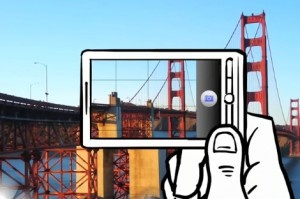Google’s Goggles enables travel search by site

Google is attempting to put an end to the days of standing in front of a landmark, wondering what it is called and when it was built. The technology giant is rolling out a new service that performs visual searches using cameras on smartphones.
Browsers simply take a picture of a landmark, submit it to Google’s search engine, which then determines what the picture is and returns a series of results in the phone browser, just like a traditional typed search.
Should trials prove successful, Google’s Goggles would be heralded as a major breakthrough in visual search technology, as well as the use of mobile internet.
It is available on phones that are run by Google’s mobile operating system Android, which states says: “No need to type your search any more. Just take a picture.” It is will then be introduced to other smartphones.
The application allows a whole range of objects to be recognised. It has a database of more than one billion images and can recognise landmarks, CD covers, logos, barcodes, books, shop fronts and business cards.
ADVERTISEMENT
Examples include taking a picture of a bottle of wine, which will deliver information about the year and the vineyard. Also taking a picture of a painting will yield results about the artist’s biography.
Google wants to find new ways to get users searching so that it can deliver more adverts alongside the search results. It has already introduced searching by voice and wants to extend the categories of search to “sight”.
Google Goggles is a first step in adding a layer of augmented reality, and would help retain its lead over Microsoft, who has regained market share following the launch of its Bing search engine.
Vic Gundotra, Google’s vice-president of engineering, admitted that the service was limited.
“Google Goggles works well on certain types of objects in certain categories. It is our goal to be able to identify any image.
Google said that the technology can recognise faces but has not included facial recognition at this stage while it deals with the privacy issues involved.
Mr Gundotra said: “We still want to work on the issues of user opt-in and control. We have the technology to do the underlying face recognition, but we decided to delay that until safeguards are in place.”
Google’s move is part of its drive to push mobile web search to a new level, and offer alternative to browsers having to type in words on the go.
Google still dominates the internet search market, boasting a global share of about 70 per cent share globally. It reported revenues of $5.94 billion for the quarter that ended on September 30 this year, almost entirely from search advertising.

